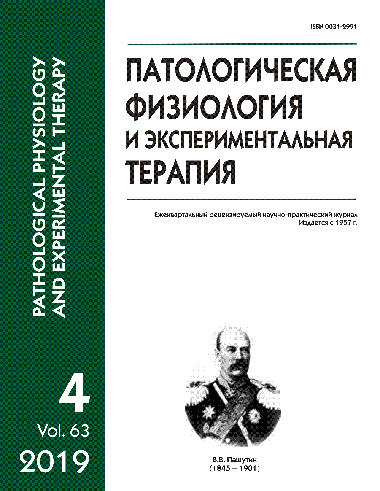Hif-1 – alternative signal pathways of activation and formation of tolerance to hypoxia/ischemia
Abstract
Along with the classical oxygen-dependent mechanism of activation of the transcription factor HIF-1, there are alternative signaling mechanisms of this process. These mechanisms can be fundamentally divided into the following types: associated with the inhibition of prolyl hydroxylases and limiting the degradation of HIF-1α (iron chelators, NO, succinate, inhibitors of lysosomal degradation); associated with the induction of HIF-1α (TNFα, IL-1, angiotensin); associated with the activation of HIF-1α (MAPK, PI3K). Of particular practical interest is the activation of HIF-1 factor when exposed to CO2 during hypercapnia, which is often associated with hypoxia. Permissive hypercapnia causes an increase in the concentration of HIF-1α in brain tissue at an equivalent level of hypoxia, and also potentiates the effectiveness of hypoxia in relation to HIF-1α activation, which is expressed in an increase in the content of HIF-1α in hippocampal neurons of the CA1 region after hypercapnic-hypoxic exposure, on the absence of a similar effect with the isolated use of hypoxia. Promising for the development of methods to increase the tolerance of organs and tissues to hypoxia / ischemia is a combination of agents that increase the activity of HIF-1, with respiratory hypercapnic-hypoxic training and drugs that affect other adaptogenic mechanisms (A1-adenosine receptors, mitoK+ATP-channels, opioid receptors).






